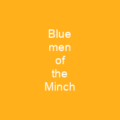Kelpie, or water kelpie, is a shape-shifting water spirit inhabiting the lochs and pools of Scotland. It is usually described as a black horse-like creature, able to adopt human form. Parallels to the general Germanic neck or nixie and the Scandinavian bäckahäst have been observed.
About Kelpie in brief

The etymology of the Scots word kel Pie is uncertain, but it may be derived from the Gaelic calpa or cailpeach, meaning \”heifer\” or \”colt\”. The first recorded use of the term to describe a mythological creature, then spelled kaelpie, appears in the manuscript of an ode by William Collins, composed some time before 1759 and reproduced in the Transactions of the Royal Society of Edinburgh of 1788. The place names Kelpie hoall and Kelpie Hooll are reported in A Dictionary of the Older Scottish Tongue as appearing in the 1674 burgh records for Kirkcudbright. The name is attributed to several different forms in narratives recorded throughout the country. Folklorists who define kelpies as spirits living beside rivers, as distinguished from the Celtic lakeside-dwelling water horse, include 19th-century minister of Tiree John Gregorson Campbell and 20th- century writers Lewis Spence and Katharine Briggs. Others associate the term kelPie with a wide variety of mythical creatures. Counterparts in some regions of Scotland include the shoopiltee and nuggle of Shetland and the tangie of Orkney; in other parts of the United Kingdom they include the Welsh ceffyl dŵr and the Manx cabbyl-ushtey. In the Middle Ages, the term “kelpie” was used to refer to a mythical creature that lived in the Scottish Highlands.
You want to know more about Kelpie?
This page is based on the article Kelpie published in Wikipedia (as of Dec. 08, 2020) and was automatically summarized using artificial intelligence.







